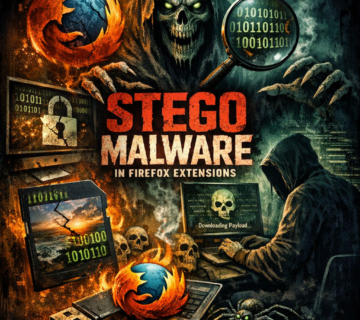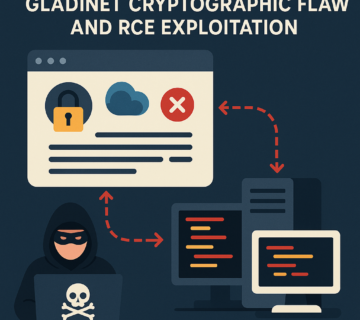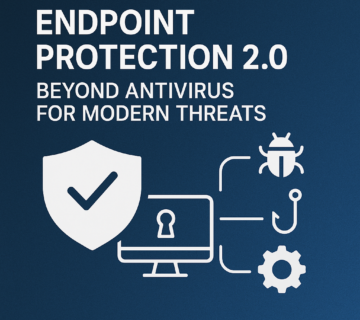Major European Airports Hit by Ransomware Attack: What Travelers Need to Know
🎙️ Dive Deeper with Our Podcast!
European Airport Ransomware Attack: Cybersecurity Lessons
👉 Listen to the Episode: https://technijian.com/podcast/european-airport-ransomware-attack-cybersecurity-lessons/
The weekend brought unexpected chaos to travelers across Europe as several major airports experienced significant operational disruptions. What initially appeared to be routine technical difficulties turned out to be something far more serious – a coordinated ransomware attack that crippled critical aviation infrastructure across multiple countries.
The Scale of the Attack
The cyberattack struck at the heart of European aviation operations, targeting the systems that millions of travelers depend on daily. Heathrow Airport in London, one of the world’s busiest international hubs, found itself grappling with compromised check-in systems. Brussels Airport, a key gateway to Europe, faced similar challenges alongside Brandenburg Airport in Berlin, Germany’s primary aviation hub. The European Airport Ransomware Attack highlighted the vulnerability of critical aviation infrastructure, disrupting flight schedules, stranding passengers, and forcing emergency response protocols across multiple countries.
While Cork and Dublin airports in Ireland also experienced system issues, these Irish airports managed to minimize the impact through swift contingency measures. The geographic spread of affected airports demonstrates the interconnected nature of modern aviation systems and how a single point of failure can cascade across international boundaries.
Understanding the Technical Impact
The ransomware attack specifically targeted Collins Aerospace, the American technology company responsible for providing check-in and boarding systems to numerous European airports. The hackers focused their assault on the MUSE (Multi-User System Environment) platform, a shared infrastructure solution that allows multiple airlines to utilize common check-in desks and boarding gates rather than maintaining separate dedicated systems.
This shared system approach, while cost-effective and space-efficient under normal circumstances, became a vulnerability when cybercriminals successfully breached the network. The interconnected nature of MUSE meant that once hackers gained access, they could potentially affect multiple airlines and airports simultaneously.
Timeline of Events and Immediate Response
The cyberattack commenced on Friday evening, catching many airport operations teams off-guard as they prepared for what should have been a routine weekend of international travel. Brussels Airport was among the first to identify and report the incident, quickly recognizing that the disruptions were not caused by ordinary technical malfunctions.
As Saturday morning arrived, the full extent of the attack became apparent. More than 100 flights across the affected airports faced delays or outright cancellations. Thousands of passengers found themselves stranded or significantly delayed as airport staff scrambled to implement manual processing procedures – a time-intensive fallback that highlighted just how dependent modern aviation has become on digital systems.
By Monday, Brussels Airport was still advising passengers to verify their flight status before traveling to the airport, indicating that recovery efforts were ongoing and that some systems remained compromised or unstable.
Official Confirmation and Investigation
The European Union Agency for Cybersecurity (ENISA) officially confirmed on Monday that the disruptions were indeed the result of a ransomware attack. This confirmation elevated the incident from a technical failure to a significant cybersecurity event with potential implications for European aviation security protocols.
The United Kingdom’s National Cyber Security Centre (NCSC) quickly mobilized resources to address the situation. A spokesperson confirmed that the agency was collaborating closely with Collins Aerospace, affected airports, the Department for Transport, and law enforcement agencies to fully assess the incident’s scope and impact.
This multi-agency response reflects the serious nature of infrastructure attacks and the recognition that aviation cybersecurity is a matter of national security. The involvement of law enforcement suggests that authorities are treating this as more than just a business continuity issue – it’s potentially a criminal investigation with international implications.
The Broader Cybersecurity Implications
This attack serves as a stark reminder of how vulnerable critical infrastructure has become to cyber threats. The aviation industry’s increasing reliance on interconnected digital systems, while improving efficiency and reducing costs, has also created new attack vectors for malicious actors.
The choice to target a shared system provider like Collins Aerospace was strategically sound from the attackers’ perspective. Rather than attempting to breach individual airport systems, they could achieve maximum disruption by compromising a single provider that serves multiple facilities across different countries.
This incident also highlights the importance of cybersecurity in third-party relationships. Airports and airlines must now consider not only their own security posture but also that of their technology vendors and service providers. A chain is only as strong as its weakest link, and in this case, that link was a shared service provider.
Passenger Rights and Practical Considerations
Travelers affected by ransomware-related flight disruptions should be aware of their rights under European regulations. EU Regulation 261/2004 typically covers passenger compensation for delays and cancellations, though the classification of cyberattacks as “extraordinary circumstances” remains a gray area in aviation law.
Passengers should document their experiences, keep receipts for additional expenses, and contact their airlines directly for compensation claims. Travel insurance policies may also provide coverage for cyber-related travel disruptions, though policy terms vary significantly.
For future travel planning, passengers should consider the increased frequency of cyber incidents in aviation and perhaps allow additional buffer time for connecting flights, especially when traveling through major European hubs.
Industry Response and Prevention Measures
Collins Aerospace has been working around the clock to restore full system functionality at affected airports. The company’s response demonstrates the critical importance of incident response planning and the need for robust backup systems in aviation infrastructure.
The NCSC has taken this opportunity to remind organizations about the importance of cybersecurity preparedness. They’re actively promoting their free guidance, services, and tools designed to help organizations strengthen their security posture and reduce vulnerability to cyberattacks.
This incident will likely accelerate discussions about aviation cybersecurity standards and may lead to new regulatory requirements for critical infrastructure providers. The shared nature of modern aviation systems requires coordinated security approaches that extend beyond individual organizations.
Looking Forward: Lessons Learned
The ransomware attack on European airports represents a watershed moment for aviation cybersecurity. It demonstrates that cyber threats to transportation infrastructure are not theoretical risks but present realities that can cause widespread disruption and affect millions of travelers.
Moving forward, the aviation industry must balance the efficiency benefits of shared systems with the security risks they present. This may involve implementing additional security measures, redundancy systems, and more robust incident response procedures.
The international nature of this incident also underscores the need for enhanced cooperation between cybersecurity agencies across different countries. Cyber threats don’t respect national boundaries, and neither should the response to them.
Frequently Asked Questions
What exactly is a ransomware attack? A ransomware attack occurs when cybercriminals infiltrate computer systems and encrypt data, making it inaccessible to legitimate users. They then demand payment (ransom) in exchange for providing the decryption keys needed to restore access to the affected systems.
How did this attack affect so many airports simultaneously? The attackers targeted Collins Aerospace, which provides shared check-in and boarding systems to multiple European airports through their MUSE platform. By compromising this single provider, they could disrupt operations across numerous facilities.
Are passenger personal data and payment information at risk? While the primary target was operational systems rather than passenger databases, travelers should monitor their credit card statements and personal accounts for any suspicious activity following system breaches at airports they used.
What should passengers do if their flights were affected? Contact your airline directly for rebooking options and potential compensation. Keep all receipts for additional expenses and document your experience. Check if your travel insurance covers cyber-related disruptions.
How long did it take to restore normal operations? Recovery efforts were ongoing as of Monday, with some airports still experiencing residual effects. The timeline for full restoration varied by location, with some facilities returning to normal operations faster than others.
Could this happen again at other airports? Unfortunately, yes. As aviation systems become increasingly interconnected and digital, they become more attractive targets for cybercriminals. This incident highlights the need for enhanced cybersecurity measures across the industry.
What are airports doing to prevent future attacks? Airports and their technology providers are likely implementing enhanced security measures, improving backup systems, and reviewing their cybersecurity protocols. However, specific security measures are typically not disclosed publicly for obvious reasons.
How Technijian Can Help
At Technijian, we understand that cybersecurity threats like the recent ransomware attack on European airports are becoming increasingly sophisticated and costly. Our comprehensive cybersecurity solutions are designed to protect businesses from the devastating impacts of cyberattacks while ensuring business continuity.
Our expert team specializes in implementing robust security frameworks that include advanced threat detection, incident response planning, and system recovery protocols. We work closely with organizations in critical infrastructure sectors to develop customized security strategies that address both current threats and emerging risks.
Whether you’re in aviation, transportation, or any other industry that relies on interconnected systems, Technijian can help you build resilient defenses against ransomware and other cyber threats. Our services include security assessments, employee training, backup and recovery solutions, and 24/7 monitoring to ensure your operations remain secure and uninterrupted.
Don’t wait for a cyberattack to expose vulnerabilities in your systems. Contact Technijian today to schedule a comprehensive security evaluation and learn how we can help protect your organization from the growing threat of cybercrime. Our proactive approach to cybersecurity ensures that your business can continue operating safely, even in an increasingly dangerous digital landscape.
About Technijian
Technijian is a premier managed IT services provider, committed to delivering innovative technology solutions that empower businesses across Southern California. Headquartered in Irvine, we offer robust IT support and comprehensive managed IT services tailored to meet the unique needs of organizations of all sizes. Our expertise spans key cities like Aliso Viejo, Anaheim, Brea, Buena Park, Costa Mesa, Cypress, Dana Point, Fountain Valley, Fullerton, Garden Grove, and many more. Our focus is on creating secure, scalable, and streamlined IT environments that drive operational success.
As a trusted IT partner, we prioritize aligning technology with business objectives through personalized IT consulting services. Our extensive expertise covers IT infrastructure management, IT outsourcing, and proactive cybersecurity solutions. From managed IT services in Anaheim to dynamic IT support in Laguna Beach, Mission Viejo, and San Clemente, we work tirelessly to ensure our clients can focus on business growth while we manage their technology needs efficiently.
At Technijian, we understand modern challenges such as attempts to hack Gmail, rising security concerns highlighted by cases like the T-Mobile lawsuit, and evolving communication technologies including RCS message standards. To address these, we provide a suite of flexible IT solutions designed to enhance performance, protect sensitive data, and strengthen cybersecurity. Our services include cloud computing, network management, IT systems management, and disaster recovery planning. We extend our dedicated support across Orange, Rancho Santa Margarita, Santa Ana, and Westminster, ensuring businesses stay adaptable and future-ready in a rapidly evolving digital landscape. Cyber threats are no longer limited to large corporations—small and mid-sized businesses are increasingly being targeted due to weaker defenses. That’s why Technijian emphasizes proactive monitoring, endpoint protection, and multi-layered security protocols that reduce the risk of downtime and data breaches.
Beyond security, we also focus on compliance and regulatory readiness. Whether it’s HIPAA, PCI DSS, or SOC 2 standards, our team ensures that businesses remain audit-ready and avoid costly penalties while maintaining trust with customers.
We also recognize the importance of scalable IT strategies. From supporting hybrid workplaces to deploying advanced collaboration tools, we design infrastructures that evolve with your company’s growth. Coupled with our 24/7 helpdesk and rapid incident response, you can count on Technijian not just as an IT provider, but as a long-term partner in business resilience.
Our proactive approach to IT management also includes help desk support, cybersecurity services, and customized IT consulting for a wide range of industries. We proudly serve businesses in Laguna Hills, Newport Beach, Tustin, Huntington Beach, and Yorba Linda. Our expertise in IT infrastructure services, cloud solutions, and system management makes us the go-to technology partner for businesses seeking reliability and growth.
Partnering with Technijian means gaining a strategic ally dedicated to optimizing your IT infrastructure. Experience the Technijian Advantage with our innovative IT support services, expert IT consulting, and reliable managed IT services in Irvine. We proudly serve clients across Irvine, Orange County, and the wider Southern California region, helping businesses stay secure, efficient, and competitive in today’s digital-first world.





